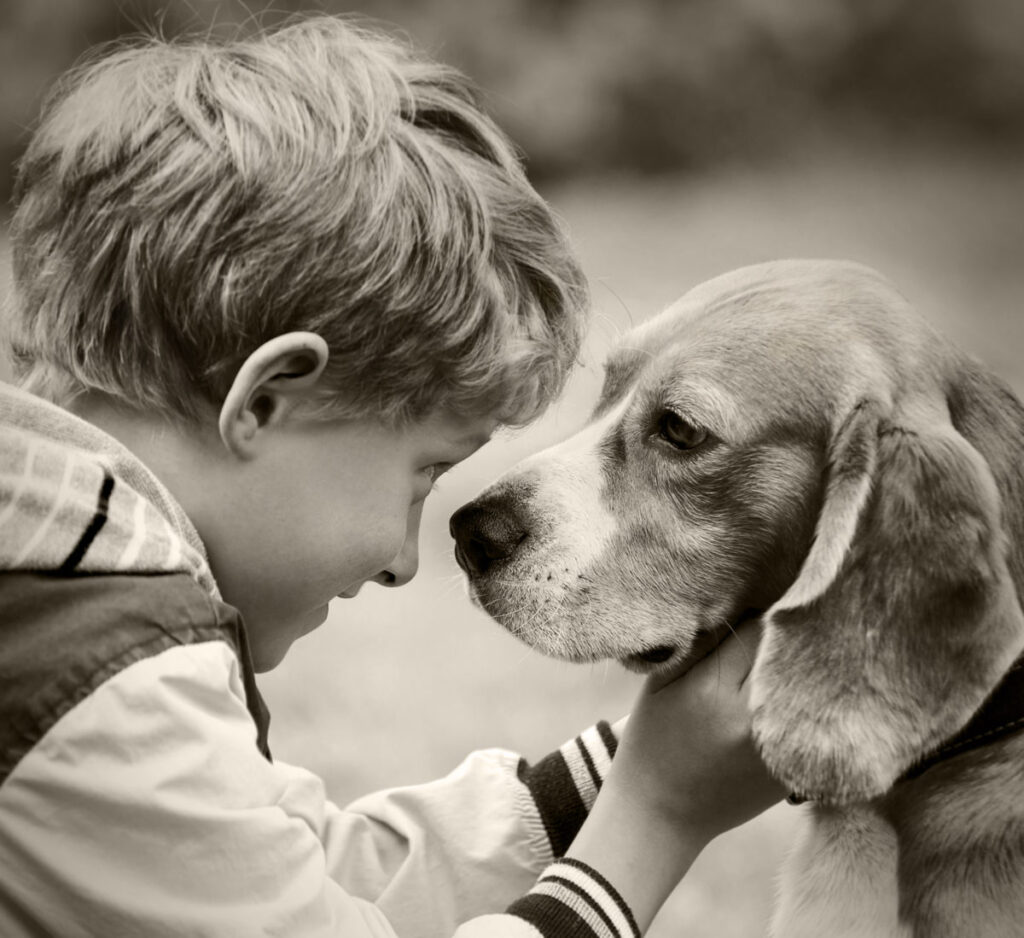
As humans, we may get stressed, fearful, anxious, or concerned about a situation and lash out aggressively. For us, that situation, if not escalated, may lead to an apology or resolution. But if a dog makes this choice, it can mean a bite, lawsuits, and potentially euthanasia. As veterinary professionals, our job is to enhance the human-animal bond and keep our patients safe, happy, and healthy. Using and recommending muzzle training can help prevent a bite on your patient’s record and potentially save a dog’s life.
The bad news is that dogs wearing muzzles are viewed as scary. This stigma needs to go because we never know when a pet will be in a situation where a muzzle may be beneficial. Those situations include emergencies such as being hit by a car as well as introductions to new challenges. Muzzles keep dogs safe when in public or around unfamiliar people, animals, and situations.
Using Marker Training and Positive Reinforcement
The best way to teach a patient to enjoy wearing a muzzle is through positive reinforcement: adding something to the situation to strengthen the likelihood of a behavior. Using this technique, we can teach dogs that muzzles are treat dispensers that make fantastic things happen.
For instance, muzzle training can be taught by using a luring technique in which treats are placed into the back of the muzzle to create a positive experience. This can be helpful, but moving from one step to the other too quickly risks pushing the pet too far and putting on the muzzle before training is complete. This can create fear, stress, and anxiety. Dogs may choose to place their head inside the muzzle for the peanut butter but may not truly understand the behavior they are being reinforced for. The result is that when we begin to place the strap over their head, they may display stress, fear, and panic.
Using marker training allows dogs to make their own choices and learn through shaping. Shaping is the process of “building” a behavior by successively reinforcing bits or “criteria’ of the behavior that are approximations of the final behavior. The behavior is molded by the communication the trainer gives the pet. In this situation, the communication is the marker. When the marker (tongue click, clicker, or word “click”) is audible, treats should follow. The pet learns that the last behavior performed during the marker signal earns reinforcement.
This video demonstrates the beginning steps of muzzle training using the shaping technique as described above. This patient does not have any learning history with a muzzle.
Breaking Down the Criteria of the Muzzle
When using the shaping technique, we must be able to break down the behavior into achievable steps for the patient. In the demonstration above, if the technician had expected the pet to place his nose inside the basket on the first try, it would have set the dog up for failure and frustration as he might not have received enough communication to learn the end-goal behavior. I typically break muzzle training into three different stages with initial goals to achieve and then break down those steps further. Here are the broken-down stages and criteria for each:
**The abbreviation C/T = Click then Treat**
- Stage One: Nose into the Basket with Consistency
- C/T for pet looking at the muzzle
- C/T for weight shifting toward the muzzle
- C/T for nose touching the muzzle
- C/T for nose touching the opening of the basket of the muzzle
- C/T for nose touching the inside of the basket
- C/T for nose placement ½ way into the basket of the muzzle
- C/T for nose placement into the basket of the muzzle
Video Demonstration: FF Stage One Muzzle
- Stage Two: Duration and Strap Introduction
- C/T for pet holding their nose in the basket for 1 second
- C/T for pet holding their nose in the basket for 2-3 seconds
- C/T for pet holding their nose in the basket for 5 seconds
- Raise strap and C/T for any attempt at nose into the basket (with the strap raised)
- Raise strap and C/T for holding nose inside of the basket with 3-5 seconds duration (with the strap raised)
Video Demonstration
- Stage Three: Strap Behavioral Therapy and Wearing the Muzzle
- C/T for moving the strap ¼ of the way behind the pet’s head (without movement or shying away)
- C/T for moving the strap 1/2 of the way behind the pet’s head (without movement or shying away)
- C/T for moving the strap 3/4 of the way behind the pet’s head (without movement or shying away)
- C/T for moving the strap all the way behind the pet’s head (without movement or shying away)
**Depending on the pet, the strap may need to be tightened to make the fit tight. Once the pet is comfortable with the strap movement at the largest setting, begin to make the strap hole smaller and smaller over time**
- C/T for wearing and responding to cued behaviors
Video Demonstration: FF Stage Three Muzzle & FF FINAL Muzzle Outcome
Utilizing Technicians
It takes time, coaching, and guidance to appropriately teach muzzle training. It’s best to utilize a veterinary technician who has an interest in training. Not only can this create a connection between client, pet, and practice, it can also increase revenue through technician muzzle-training appointments and product sales. The technician can teach this behavior to pets in private appointments or coach and demonstrate the behavior so owners can work with the dog at home. Regardless, scheduling appointments to check progress is crucial to making the end goal a reality.
Final Thoughts
Muzzle training using a marker gives the patient a choice to engage at their own comfort level. This also allows us to reinforce behavior at smaller criteria increases and change the way the pet feels about each step along the way. Muzzle training can be a life-saving behavioral investment for your client. They just need to have the right support and recommendations from staff like you!
This article was reviewed/edited by board-certified veterinary behaviorist Dr. Kenneth Martin and/or veterinary technician specialist in behavior Debbie Martin, LVT.
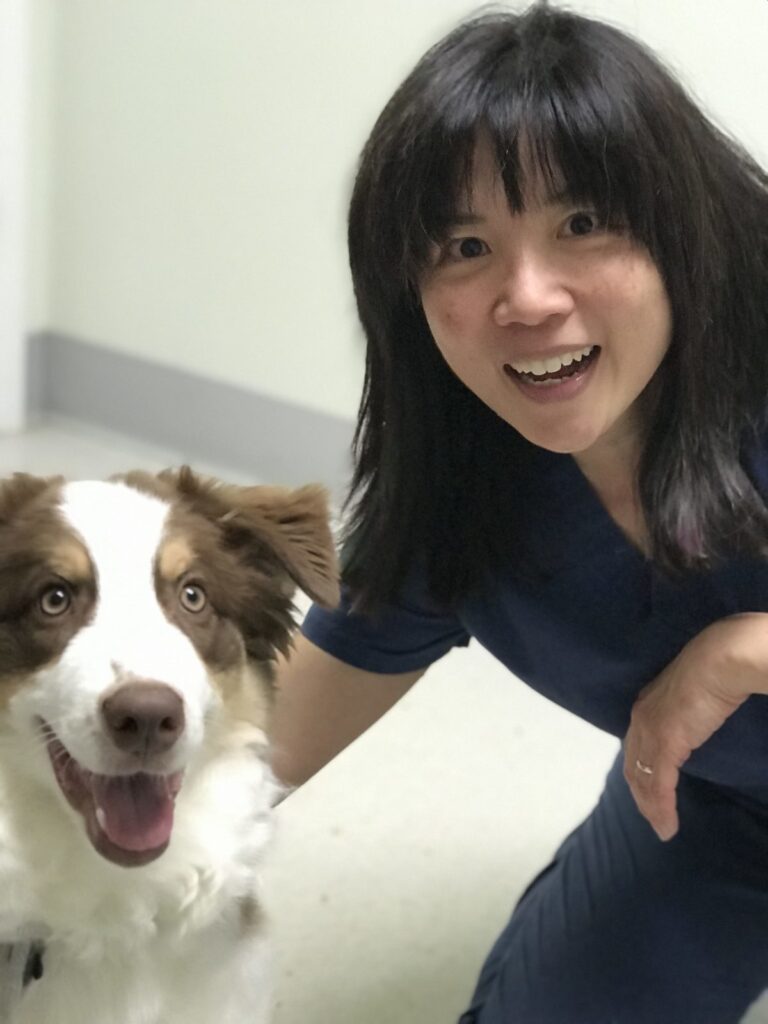
 I’m a Fear Free trainer, but there are no veterinarians I trust in my town, so I travel an hour to TLC Pet Hospital in Albuquerque and have had the most amazing experiences, thanks to the patience, kindness, and knowledge of the staff there. My dogs are fearful, and one is especially vet-phobic after traumatic experiences elsewhere. Some of his past vet visits have been so anxiety-inducing for him that I also end up in tears. But with gabapentin on board and the Fear Free approach from Dr. Long and Sam the veterinary assistant, my dog was wagging, approaching them, licking their faces, asking for pets, and acting like the brave and social dog he is at home. All of us in the room were floored by the change! At the next checkup he took food from them, did some chin-rest stationing with them, targeted their hands, and showed off his tricks. My own fear, anxiety, and stress levels have been drastically reduced thanks to their dedication to Fear Free vet visits. I’ll continue to do the two-hour round trip because I love having a veterinarian who listens to me and treats me like an adult, and because my dogs’ mental and emotional health is taken as seriously as their physical health at TLC. I am so thankful for their care and commitment to Fear Free vet visits and their overall friendly clinic.
I’m a Fear Free trainer, but there are no veterinarians I trust in my town, so I travel an hour to TLC Pet Hospital in Albuquerque and have had the most amazing experiences, thanks to the patience, kindness, and knowledge of the staff there. My dogs are fearful, and one is especially vet-phobic after traumatic experiences elsewhere. Some of his past vet visits have been so anxiety-inducing for him that I also end up in tears. But with gabapentin on board and the Fear Free approach from Dr. Long and Sam the veterinary assistant, my dog was wagging, approaching them, licking their faces, asking for pets, and acting like the brave and social dog he is at home. All of us in the room were floored by the change! At the next checkup he took food from them, did some chin-rest stationing with them, targeted their hands, and showed off his tricks. My own fear, anxiety, and stress levels have been drastically reduced thanks to their dedication to Fear Free vet visits. I’ll continue to do the two-hour round trip because I love having a veterinarian who listens to me and treats me like an adult, and because my dogs’ mental and emotional health is taken as seriously as their physical health at TLC. I am so thankful for their care and commitment to Fear Free vet visits and their overall friendly clinic. I work closely with the veterinary hospitals in my town. The team at Appalachian New River Veterinary Associates (ANRVA) referred Toby to me. Toby was terrified at the veterinary hospital and could not take food, even as a young puppy. I established a rapport with Toby away from the veterinary hospital. I did this using special food and something else Toby loved – play! Toby learned foundation behaviors that gave some predictability to our sessions and helped him feel safe.
I work closely with the veterinary hospitals in my town. The team at Appalachian New River Veterinary Associates (ANRVA) referred Toby to me. Toby was terrified at the veterinary hospital and could not take food, even as a young puppy. I established a rapport with Toby away from the veterinary hospital. I did this using special food and something else Toby loved – play! Toby learned foundation behaviors that gave some predictability to our sessions and helped him feel safe.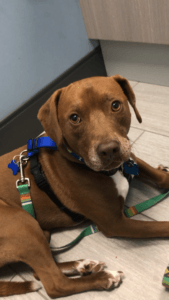 Maxwell is a 7-year-old retriever/hound mix who was rescued from a hoarding situation with more than 100 dogs. Maxwell was the most fearful of them. We don’t know a lot about Maxwell’s day-to-day life while on the hoarder’s property, but volunteers reported that he was kept in a small shed without much social interaction.
Maxwell is a 7-year-old retriever/hound mix who was rescued from a hoarding situation with more than 100 dogs. Maxwell was the most fearful of them. We don’t know a lot about Maxwell’s day-to-day life while on the hoarder’s property, but volunteers reported that he was kept in a small shed without much social interaction.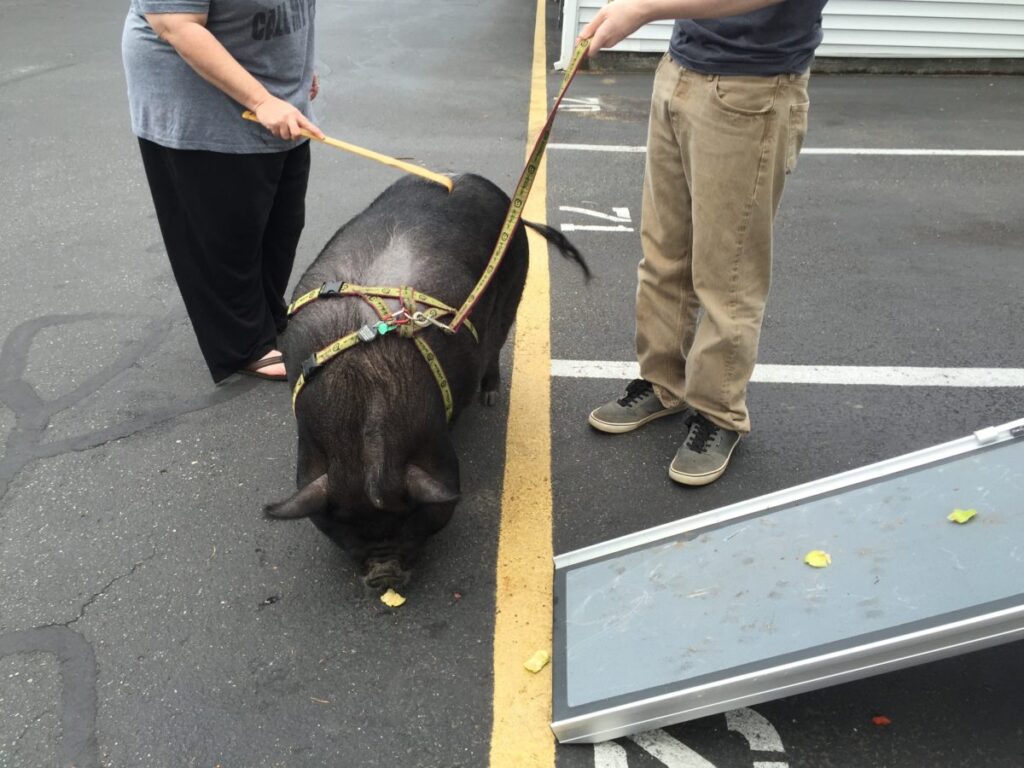
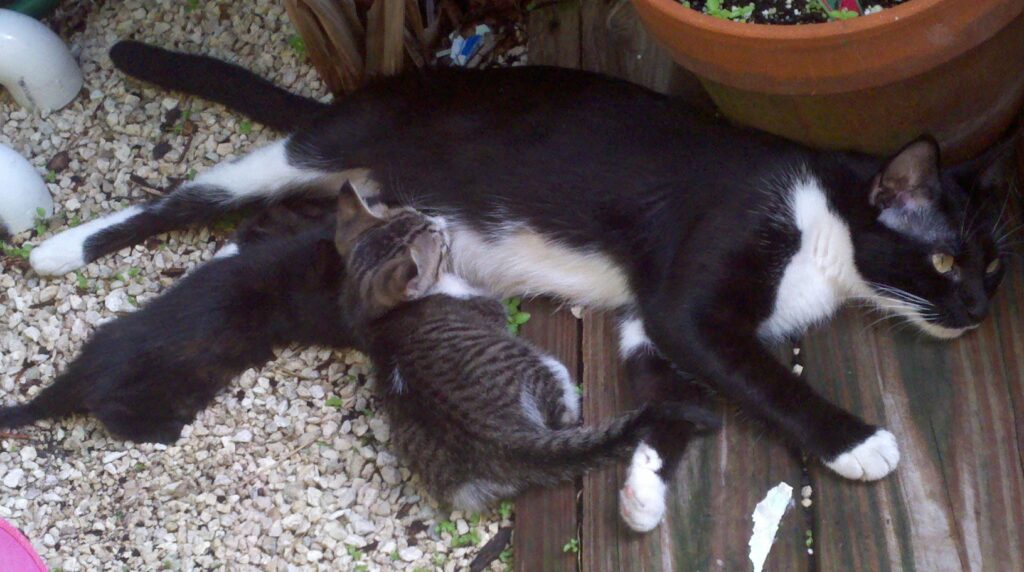
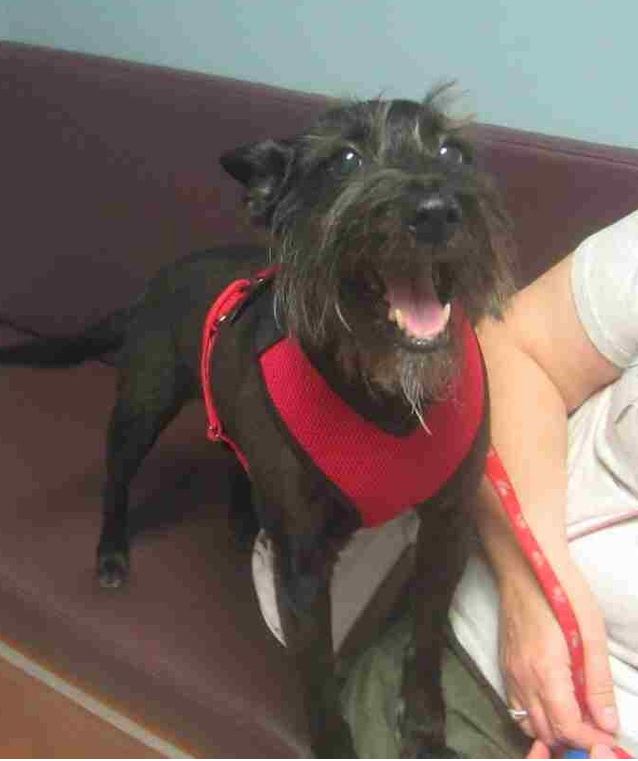
 owner told us that his previous clinic had to muzzle him, and he was handled somewhat roughly. She wanted to get away from that. On his first visit we just got a feel for his comfort level. He barked and growled at us in the room but took treats willingly. He allowed an otoscopic exam but was tense, and when the stethoscope was introduced, he actively tried to bite. Approaching him with a muzzle sent him into a panic. We sent some Trazodone home with him that day for future visits and discussed doing a set of behavioral visits to help desensitize him to handling and instruments.
owner told us that his previous clinic had to muzzle him, and he was handled somewhat roughly. She wanted to get away from that. On his first visit we just got a feel for his comfort level. He barked and growled at us in the room but took treats willingly. He allowed an otoscopic exam but was tense, and when the stethoscope was introduced, he actively tried to bite. Approaching him with a muzzle sent him into a panic. We sent some Trazodone home with him that day for future visits and discussed doing a set of behavioral visits to help desensitize him to handling and instruments.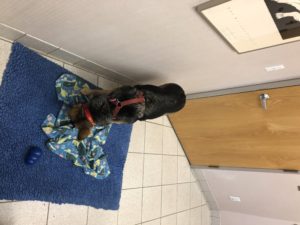 able to make her visit less stressful and even a bit enjoyable. Our veterinarian is part of a Fear Free practice (Thank you,
able to make her visit less stressful and even a bit enjoyable. Our veterinarian is part of a Fear Free practice (Thank you,  We were beside ourselves on how to handle taking Roger to the vet. We put him through basic obedience and advanced obedience classes twice to learn manners and how to act appropriately. He has done great in our home and in our families’ homes as we know how to handle his anxiety. In our vet’s office, though, Roger would go crazy as his anxiety shot through the roof from all the smells and people. Thanks to the Fear Free program and team at Frey Pet Hospital, Roger can feel safer and happier
We were beside ourselves on how to handle taking Roger to the vet. We put him through basic obedience and advanced obedience classes twice to learn manners and how to act appropriately. He has done great in our home and in our families’ homes as we know how to handle his anxiety. In our vet’s office, though, Roger would go crazy as his anxiety shot through the roof from all the smells and people. Thanks to the Fear Free program and team at Frey Pet Hospital, Roger can feel safer and happier 


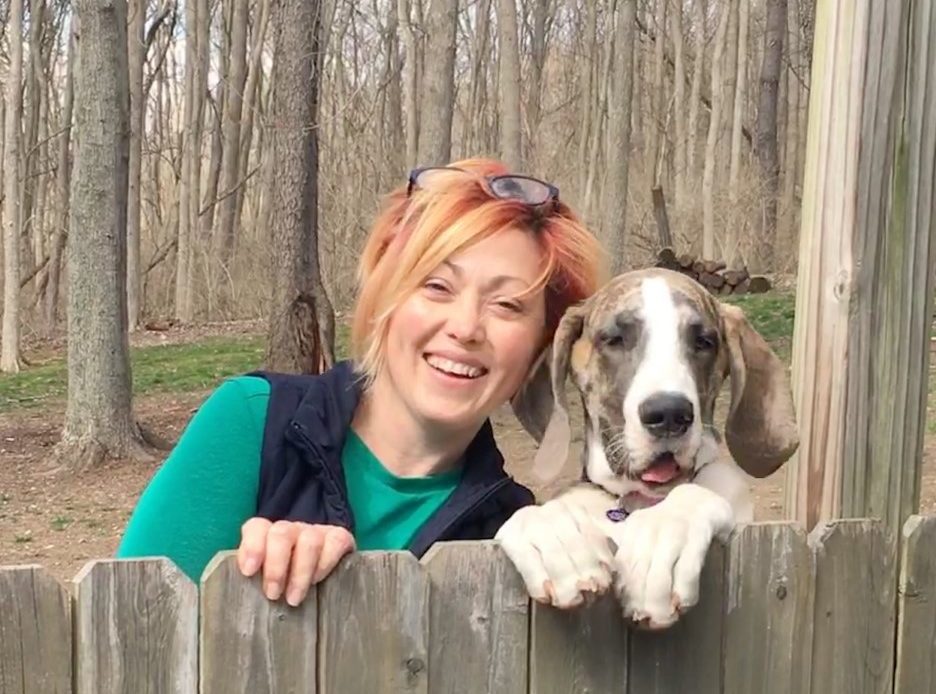
 When Fiona first came to us at Gamble Pet Clinic, an examination without a fearful reaction from her was impossible. An attack by another dog at a young age had caused her to be anxious and nervous ever since. She had been muzzled at every veterinary clinic since her attack until coming to Gamble Pet Clinic. She was fearful initially, trying to nip at the doctor and staff when they attempted to examine her.
When Fiona first came to us at Gamble Pet Clinic, an examination without a fearful reaction from her was impossible. An attack by another dog at a young age had caused her to be anxious and nervous ever since. She had been muzzled at every veterinary clinic since her attack until coming to Gamble Pet Clinic. She was fearful initially, trying to nip at the doctor and staff when they attempted to examine her. I took the Fear Free course. It was interesting and useful. I’m now working with two local veterinary offices who found me through the Fear Free website.
I took the Fear Free course. It was interesting and useful. I’m now working with two local veterinary offices who found me through the Fear Free website. Sal was brought to us to establish why he had been having chronic vomiting and diarrhea. When I approached him in the lobby, he immediately pinned his ears and retreated under the couch. We brought him into an exam room, and he warmed up a bit but was still wary. Mom and Dad mentioned that in the past at other clinics he was taken to “the back” for vaccines and they could hear him vocalizing from the exam room.
Sal was brought to us to establish why he had been having chronic vomiting and diarrhea. When I approached him in the lobby, he immediately pinned his ears and retreated under the couch. We brought him into an exam room, and he warmed up a bit but was still wary. Mom and Dad mentioned that in the past at other clinics he was taken to “the back” for vaccines and they could hear him vocalizing from the exam room.